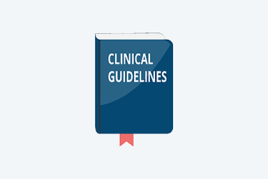Melanoma
Q. What is melanoma?
A. Melanoma, the most serious form of skin cancer, is characterized by the uncontrolled growth of pigment-producing cells. Melanoma may appear on the skin suddenly without warning but also can develop within an existing mole. The overall incidence of melanoma continues to rise. (1,2)
Q. Is melanoma a serious disease?
A. Melanoma is highly treatable when detected early, but advanced melanoma can spread to the lymph nodes and internal organs, which can result in death. It is estimated that 8,430 people will die from melanoma in 2025 in the United States. (3) It is estimated that 212,200 new cases of melanoma, 107,240 noninvasive (in situ) and 104,960 invasive, will be diagnosed in the U.S. in 2025. (3)
Q. What causes melanoma?
A. Excess exposure to UV radiation from sunlight or use of indoor tanning increases risk for all skin cancer types, including melanoma, as does a personal history of the disease. (3)
Research indicates that both UV light from the sun and tanning beds can cause melanoma and increase the risk of a benign mole progressing to melanoma. (4)
Experiencing five or more blistering sunburns between ages 15 and 20 increases one's melanoma risk by 80 percent.(5)
Exposure to tanning beds increases the risk of melanoma diagnosis and increases risk of being diagnosed with melanoma before the age 50. (6,7)
The majority of melanoma cases are attributable to UV exposure. (8-10) Other possible factors include genetics and immune system deficiencies.
Tanning
Using tanning beds before age 20 can increase your chances of developing melanoma by 47%, and the risk increases with each use. (6)
Women younger than 30 are six times more likely to develop melanoma if they tan indoors. (11)
Q. Who gets melanoma?
A. Melanoma can strike anyone, regardless of skin tones. In patients with darker skin tones, the disease is often diagnosed in its later stages, when it’s more difficult to treat. (12) Research has shown that patients with darker skin tones are less likely than patients with lighter skin tones to survive melanoma. (3,13)
Your risk is also increased if you:
Have more than 50 moles, large moles or atypical (unusual) moles. (3,14,15)
Have had a previous melanoma or nonmelanoma skin cancer, which is more common than melanoma. (14,16,17)
Have a family history of melanoma. (3,17,18)
Have sun-sensitive skin (i.e., you sunburn easily; have red or blonde hair; or have blue or green eyes). (3,17,18)
Have a history of excessive sun exposure or indoor tanning. (3,6,17,18)
Have had other previous cancers, such as breast or colorectal. (19-21)
Have a weakened immune system.
Have had a blood or marrow transplant. (22)
Have had other previous cancers during childhood. (23)
Q. What are atypical moles?
A. Most people have moles (also known as nevi). Atypical moles are unusual moles that are generally larger than normal moles and variable in color. They often have irregular borders and may occur in far greater numbers than regular moles. As with common moles, atypical moles can appear anywhere on the body, including areas exposed to the sun. They usually appear on the back, chest, and abdomen. Atypical moles rarely appear on the face. The presence of atypical moles is an important risk factor for melanoma developing in a mole or on apparently normal skin. Most atypical moles are benign (not cancerous). However, because this type of mole can turn into skin cancer, your dermatologist will likely advise you to watch atypical moles for changes that could be early signs of skin cancer.
Q. What does melanoma look like?
A. Recognition of changes in the skin is the best way to detect early melanoma. They most frequently appear on the upper back, torso, lower legs, head and neck, though these may vary by age, gender, and race. (24-28)
Melanomas seem to appear more often in the lower extremities like the leg in women compared to men, who seem to have more melanomas on their torso as well as the head and neck. (29-31)
People with skin of color are prone to skin cancer in areas that aren’t commonly exposed to the sun, like the palms of the hands, the soles of the feet, the groin and the inside of the mouth. They also may develop melanoma under their nails. (12,32)
It is important to note that about 20-30% of melanomas develop in existing moles, while 70-80% arise on seemingly normal skin. (31-36)
The American Academy of Dermatology urges everyone to examine their skin regularly. This means looking over your entire body, including your back, your scalp, your palms, your soles, and between your toes.
If you notice a mole on your skin, you should follow the ABCDE rule, which outlines the warning signs of melanoma:
A stands for ASYMMETRY. One half of the spot is unlike the other half.
B stands for BORDER. The spot has an irregular, scalloped, or poorly defined border.
C stands for COLOR. The spot has varying colors from one area to the next, such as shades of tan, brown or black, or areas of white, red, or blue.
D stands for DIAMETER. While melanomas are usually greater than 6 mm, or about the size of a pencil eraser, when diagnosed, they can be smaller.
E stands for EVOLVING. The spot looks different from the rest or is changing in size, shape, or color.
If you notice a new mole, a mole different from others on your skin, or one that changes, itches or bleeds, even if it is smaller than 6mm, you should make an appointment to see a board-certified dermatologist as soon as possible.
Q. Can melanoma be cured?
A. When detected in its earliest stages, melanoma is highly treatable. The average five-year survival rate for individuals whose melanoma is detected and treated before it spreads to the lymph nodes is 99%. The five-year survival rates for melanoma with regional and distant spread are 75% and 35%, respectively. (3)
Early detection is essential. Dermatologists recommend a regular self-examination of the skin to detect changes in its appearance. Changing, suspicious or unusual moles or blemishes should be examined as soon as possible. A board-certified dermatologist can make individual recommendations as to how often a person needs a skin exam from a doctor based on individual risk factors, including skin type, history of sun exposure, and family history.
Q. Can melanoma be prevented?
A. UV exposure is the most preventable risk factor for all skin cancers, including melanoma. Here’s how to protect your skin from the sun’s harmful UV rays:
Seek shade. The sun’s rays are strongest between 10 a.m. and 2 p.m. If your shadow is shorter than you are, seek shade.
Wear sun-protective clothing, such as a lightweight long-sleeved shirt, pants, a wide-brimmed hat, and sunglasses with UV protection, when possible. For more effective protection, choose clothing with an ultraviolet protection factor (UPF) number on the label.
Apply a broad-spectrum, water-resistant sunscreen with an SPF of 30 or higher to all skin not covered by clothing. Broad-spectrum sunscreen provides protection from both UVA and UVB rays.
At a minimum, most adults need about 1 ounce of sunscreen — roughly the amount to fill a shot glass — to fully cover skin not covered by clothing. Depending on your body size, you may need more sunscreen to protect your exposed skin from the sun’s harmful rays.
When applying sunscreen to your face, use at least 1 teaspoon (about the amount needed to cover the length of your index and middle fingers).
Use extra caution near water, snow, and sand because they reflect and intensify the damaging rays of the sun, which can increase your chances of sunburn.
Avoid tanning beds. If you want to look tan, consider using a self-tanning product, but continue to use sunscreen with it.
Last updated: 6/20/25
References
SEER Cancer Stat Facts: Melanoma of the Skin. National Cancer Institute. https://seer.cancer.gov/statfacts/html/melan.html
Arnold M, Singh D, Laversanne M, et al. Global Burden of Cutaneous Melanoma in 2020 and Projections to 2040. JAMA Dermatol. May 1 2022;158(5):495-503. doi:10.1001/jamadermatol.2022.0160
Cancer Facts & Figures 2025. American Cancer Society. Accessed 01/28/2025, 2025. https://www.cancer.org/content/dam/cancer-org/research/cancer-facts-and-statistics/annual-cancer-facts-and-figures/2025/2025-cancer-facts-and-figures-acs.pdf
Shain AH, Yeh I, Kovalyshyn I, et al. The Genetic Evolution of Melanoma from Precursor Lesions. N Engl J Med. Nov 12 2015;373(20):1926-36. doi:10.1056/NEJMoa1502583
Wu S, Han J, Laden F, Qureshi AA. Long-term ultraviolet flux, other potential risk factors, and skin cancer risk: a cohort study. Cancer Epidemiol Biomarkers Prev. Jun 2014;23(6):1080-9. doi:10.1158/1055-9965.EPI-13-0821
An S, Kim K, Moon S, et al. Indoor Tanning and the Risk of Overall and Early-Onset Melanoma and Non-Melanoma Skin Cancer: Systematic Review and Meta-Analysis. Cancers (Basel). Nov 25 2021;13(23)doi:10.3390/cancers13235940
Colantonio S, Bracken MB, Beecker J. The association of indoor tanning and melanoma in adults: systematic review and meta-analysis. J Am Acad Dermatol. May 2014;70(5):847-57 e1-18. doi:10.1016/j.jaad.2013.11.050
Arnold M, Kvaskoff M, Thuret A, Guenel P, Bray F, Soerjomataram I. Cutaneous melanoma in France in 2015 attributable to solar ultraviolet radiation and the use of sunbeds. J Eur Acad Dermatol Venereol. Oct 2018;32(10):1681-1686. doi:10.1111/jdv.15022
Arnold M, de Vries E, Whiteman DC, et al. Global burden of cutaneous melanoma attributable to ultraviolet radiation in 2012. Int J Cancer. Sep 15 2018;143(6):1305-1314. doi:10.1002/ijc.31527
Islami F, Sauer AG, Miller KD, et al. Cutaneous melanomas attributable to ultraviolet radiation exposure by state. Int J Cancer. Sep 1 2020;147(5):1385-1390. doi:10.1002/ijc.32921
Lazovich D, Isaksson Vogel R, Weinstock MA, Nelson HH, Ahmed RL, Berwick M. Association Between Indoor Tanning and Melanoma in Younger Men and Women. JAMA Dermatol. Mar 2016;152(3):268-75. doi:10.1001/jamadermatol.2015.2938
Agbai ON, Buster K, Sanchez M, et al. Skin cancer and photoprotection in people of color: a review and recommendations for physicians and the public. J Am Acad Dermatol. Apr 2014;70(4):748-762. doi:10.1016/j.jaad.2013.11.038
Dawes SM, Tsai S, Gittleman H, Barnholtz-Sloan JS, Bordeaux JS. Racial disparities in melanoma survival. J Am Acad Dermatol. Nov 2016;75(5):983-991. doi:10.1016/j.jaad.2016.06.006
Muller C, Wendt J, Rauscher S, et al. Risk Factors of Subsequent Primary Melanomas in Austria. JAMA Dermatol. Feb 1 2019;155(2):188-195. doi:10.1001/jamadermatol.2018.4645
Shreberk-Hassidim R, Ostrowski SM, Fisher DE. The Complex Interplay between Nevi and Melanoma: Risk Factors and Precursors. Int J Mol Sci. Feb 10 2023;24(4)doi:10.3390/ijms24043541
Beroukhim K, Pourang A, Eisen DB. Risk of second primary cutaneous and noncutaneous melanoma after cutaneous melanoma diagnosis: A population-based study. J Am Acad Dermatol. Mar 2020;82(3):683-689. doi:10.1016/j.jaad.2019.10.024
Conforti C, Zalaudek I. Epidemiology and Risk Factors of Melanoma: A Review. Dermatol Pract Concept. Jul 2021;11(Suppl 1):e2021161S. doi:10.5826/dpc.11S1a161S
Carr S, Smith C, Wernberg J. Epidemiology and Risk Factors of Melanoma. Surg Clin North Am. Feb 2020;100(1):1-12. doi:10.1016/j.suc.2019.09.005
Jeyakumar A, Chua TC, Lam AK, Gopalan V. The Melanoma and Breast Cancer Association: An Overview of their 'Second Primary Cancers' and the Epidemiological, Genetic and Biological correlations. Crit Rev Oncol Hematol. Aug 2020;152:102989. doi:10.1016/j.critrevonc.2020.102989
Hirvonen K, Rantanen M, Haapaniemi A, Pitkaniemi J, Malila N, Makitie AA. Second primary cancer after major salivary gland carcinoma. Head Neck. Feb 2018;40(2):251-258. doi:10.1002/hed.24937
Robertson D, Ng SK, Baade PD, Lam AK. Risk of extracolonic second primary cancers following a primary colorectal cancer: a systematic review and meta-analysis. Int J Colorectal Dis. Mar 2022;37(3):541-551. doi:10.1007/s00384-022-04105-x
Broman KK, Meng Q, Holmqvist A, et al. Incidence of and Risk Factors for Cutaneous Malignant Neoplasms After Blood or Marrow Transplant. JAMA Dermatology. 2024;doi:10.1001/jamadermatol.2024.5129
Rotz SJ, Stratton K, Leisenring WM, et al. Melanoma Among Adult Survivors of Childhood Cancer: A Report From the Childhood Cancer Survivor Study. J Clin Oncol. 2025;0(0):JCO2401519.
Yuan TA, Lu Y, Edwards K, Jakowatz J, Meyskens FL, Liu-Smith F. Race-, Age-, and Anatomic Site-Specific Gender Differences in Cutaneous Melanoma Suggest Differential Mechanisms of Early- and Late-Onset Melanoma. Int J Environ Res Public Health. Mar 13 2019;16(6)doi:10.3390/ijerph16060908
Culp MB, Lunsford NB. Melanoma Among Non-Hispanic Black Americans. Prev Chronic Dis. Jun 20 2019;16:E79. doi:10.5888/pcd16.180640
Matthews NH, Li WQ, Qureshi AA, Weinstock MA, Cho E. Epidemiology of Melanoma. In: Ward WH, Farma JM, eds. Cutaneous Melanoma: Etiology and Therapy. Codon Publications The Authors.; 2017.
Mahendraraj K, Sidhu K, Lau CSM, McRoy GJ, Chamberlain RS, Smith FO. Malignant Melanoma in African-Americans: A Population-Based Clinical Outcomes Study Involving 1106 African-American Patients from the Surveillance, Epidemiology, and End Result (SEER) Database (1988-2011). Medicine (Baltimore). Apr 2017;96(15):e6258. doi:10.1097/MD.0000000000006258
Enninga EAL, Moser JC, Weaver AL, et al. Survival of cutaneous melanoma based on sex, age, and stage in the United States, 1992-2011. Cancer Med. Oct 2017;6(10):2203-2212. doi:10.1002/cam4.1152
Stanienda-Sokol K, Salwowska N, Slawinska M, et al. Primary Locations of Malignant Melanoma Lesions Depending on Patients' Gender and Age. Asian Pac J Cancer Prev. Nov 26 2017;18(11):3081-3086. doi:10.22034/APJCP.2017.18.11.3081
Schwartz MR, Luo L, Berwick M. Sex Differences in Melanoma. Curr Epidemiol Rep. Jun 2019;6(2):112-118. doi:10.1007/s40471-019-00192-7
Olsen CM, Thompson JF, Pandeya N, Whiteman DC. Evaluation of Sex-Specific Incidence of Melanoma. JAMA Dermatol. May 1 2020;156(5):553-560. doi:10.1001/jamadermatol.2020.0470
Brunsgaard EK, Wu YP, Grossman D. Melanoma in skin of color: Part I. Epidemiology and clinical presentation. J Am Acad Dermatol. Sep 2023;89(3):445-456. doi:10.1016/j.jaad.2022.04.056
 Find a Dermatologist
Find a Dermatologist
 Member directory
Member directory
 AAD Learning Center
AAD Learning Center
 2026 AAD Annual Meeting
2026 AAD Annual Meeting
 Need coding help?
Need coding help?
 Reduce burdens
Reduce burdens
 Clinical guidelines
Clinical guidelines
 Why use AAD measures?
Why use AAD measures?
 Latest news
Latest news
 New insights
New insights
 Physician wellness
Physician wellness
 Joining or selling a practice?
Joining or selling a practice?
 Promote the specialty
Promote the specialty
 Advocacy priorities
Advocacy priorities
